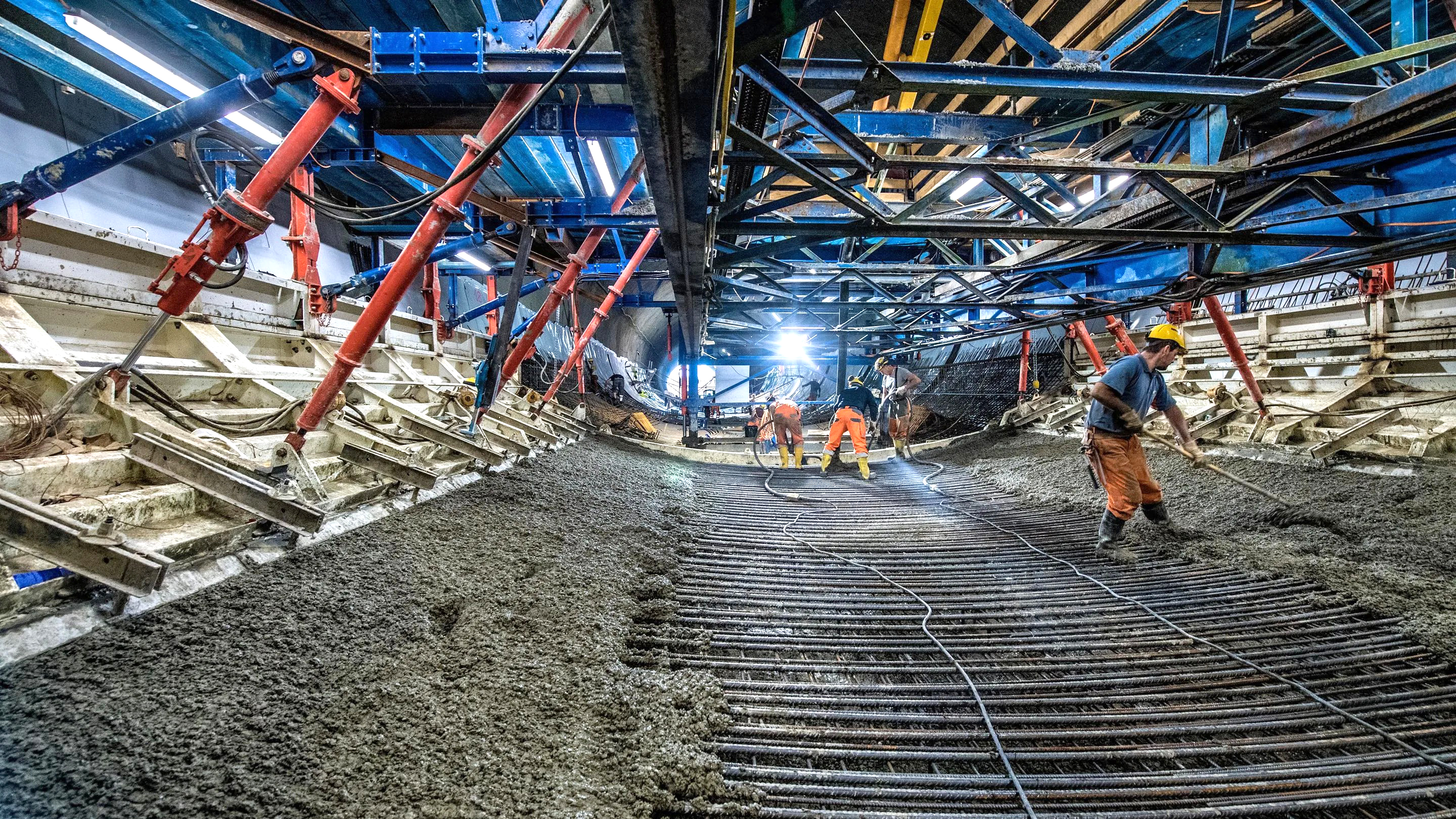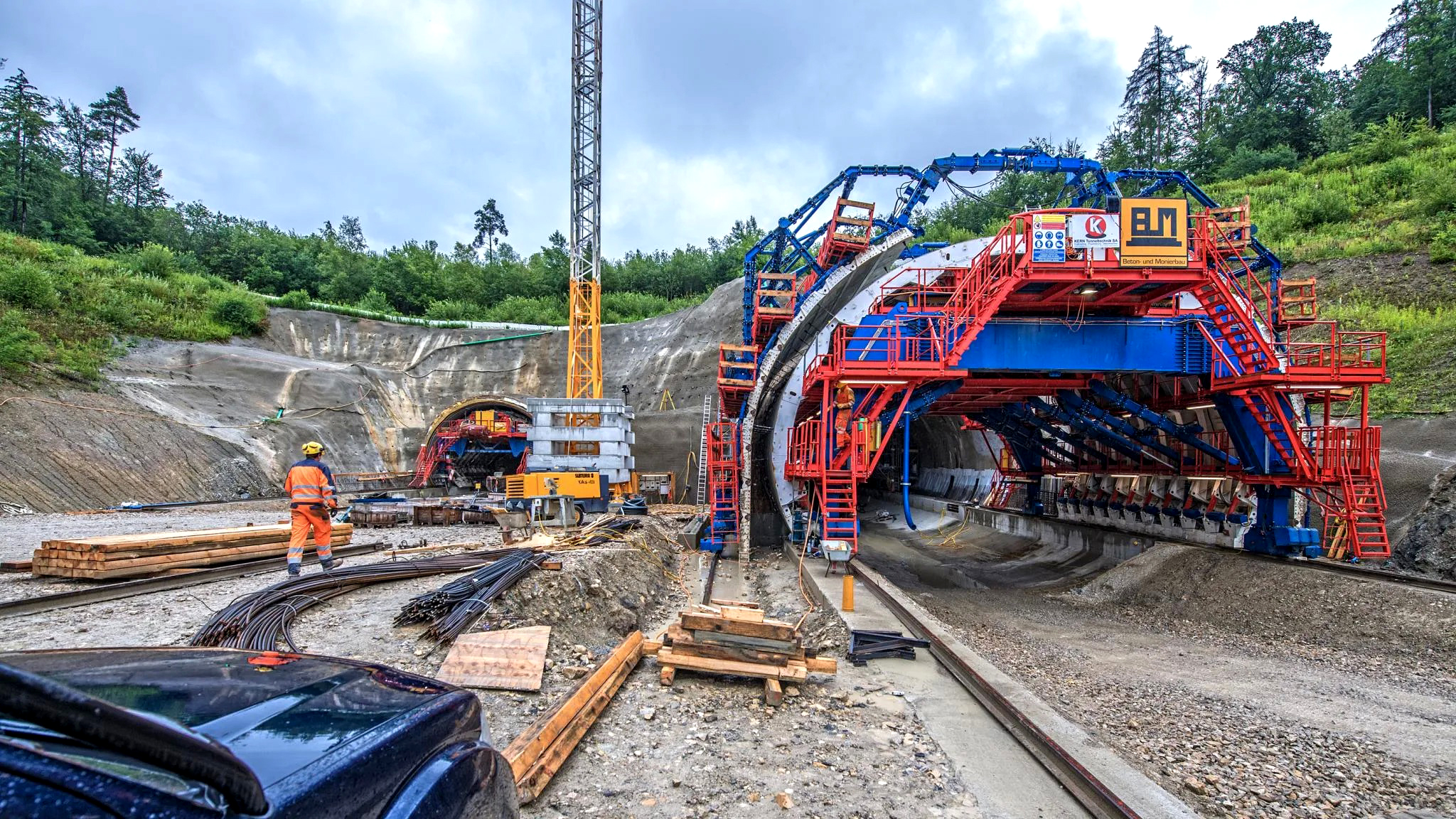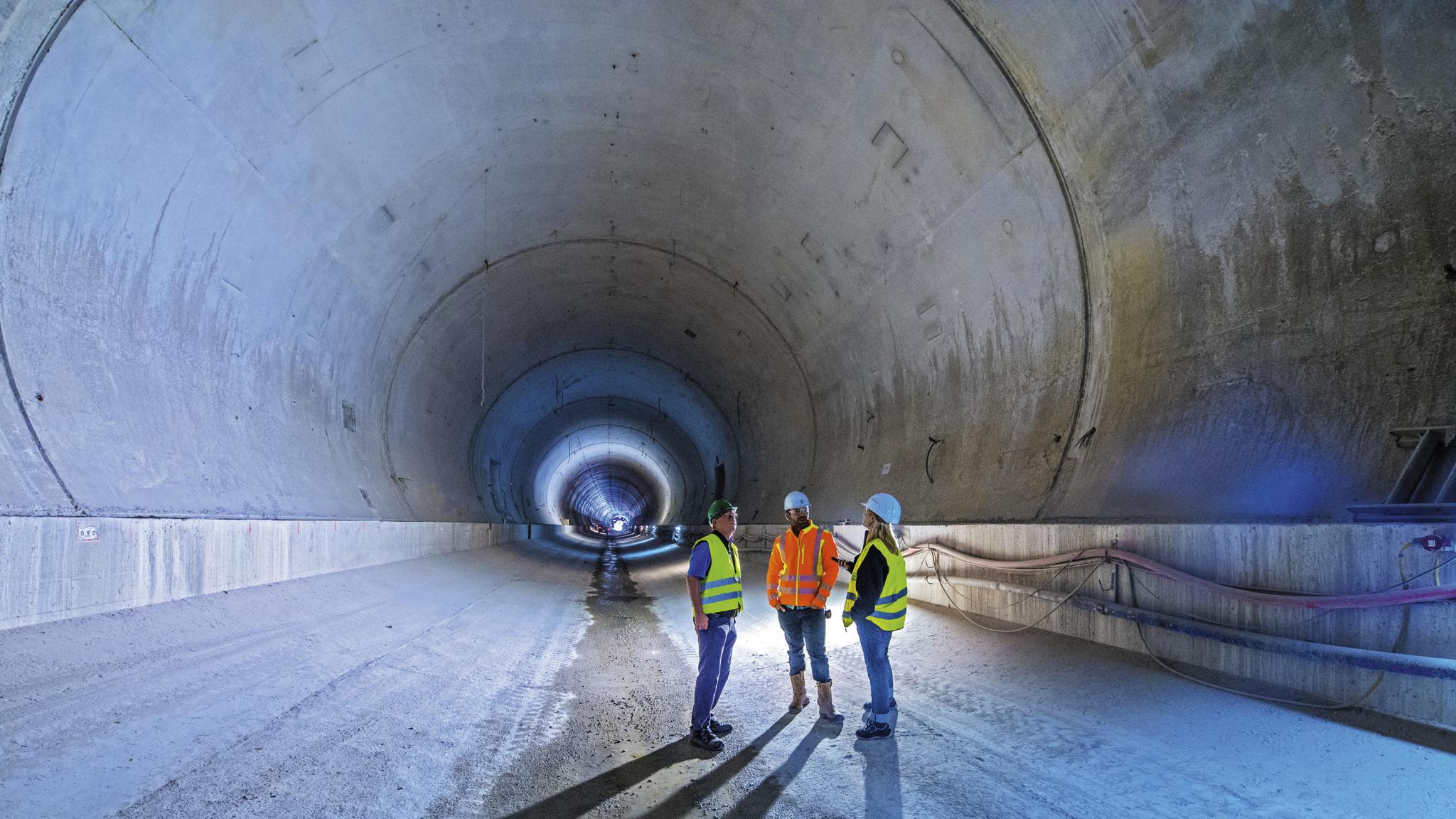Herrschaftsbucktunnel
The demands for tunnelling are constantly increasing. HeidelbergCement's know-how, foresighted development work and extensive portfolio make it possible to construct such complex projects in a superior quality. Such as the Herrschaftsbuck Tunnel near Rheinfelden.
The light at the end of the tunnel can already be seen: " With a length of just about 500 metres, the Herrschaftsbucktunnel is not particularly long, but the challenges and work preparations are the same as for a tunnel of several kilometres in length," says Roland Arnold, project manager of the Innsbruck-based BeMo Tunnelling GmbH, which is erecting the shell construction together with the consortium partner Subterra.
After its completion, the twin-tube tunnel will direct road traffic on the east-west link from the A5 federal motorway to the A81 as far as Switzerland. Arnold explains: "The tunnel undercuts the hilltop of the Herrschaftsbuck that gives it its name. It will relieve the pressure on the people of the Upper Rhine who depend on a solid infrastructure in this densely populated region. The whole thing is an important breakthrough in the further construction of the A98 motorway, which so far ends at the Hochrhein motorway junction."
The engineers chose the "New Austrian Tunnel Construction Method" (NÖT) for the project, which renounces a tunnel boring machine. "This normally only pays off with a longer tunnel," explains Roland Arnold. "In addition, a road tunnel requires more width than height - in contrast to a railway tunnel with its catenary line. So we dredged and blasted two rather egg-shaped tubes in the so-called 'mouth profile' into the mountain."
Both tunnel tubes were excavated at the same time from the east, with a slight advance of the north tube (30 metres). "Coming from the west, the terrain rises relatively sharply, so that after about 100 metres the maximum overburden of 20 to 25 metres is reached. The westbound tube will be 7.5 meters in width and will have two lanes, while the eastbound tube will be 11 meters in width and will have three lanes, as there will also be a threading lane," explains the construction engineer. "Emergency sidewalks are arranged next to the two tubes. These paths are connected by a cross-cut in the middle of the tunnel so that in the event of a fire the other tube can serve as an escape route," adds Roland Arnold.
"Passing through the difficult subsoil was a great challenge," explains Arnold. "We had to work our way through different layers of rock with different characteristics. After each downstroke of 1.25 metres, it was essential to immediately secure the freshly excavated tunnel reveal so that any falling rocks would not endanger our workers," adds Arnold. This was secured by a three-centimetre shotcrete layer. "Only then do we set the first reinforcement layer and the steel grid arch as a supporting element. Then shotcrete is applied again. The tunneller initially applies around nine cubic metres or 20 tonnes of shotcrete per shotcreting operation. After a second layer of reinforcement and shotcrete, the walls are covered by about 15 to 40 centimeters of shotcrete, depending on the tunnelling category".
Skewers drilled into the rock to a depth of four meters around the so-called ridges, i.e. the tunnel ceiling, as well as radial anchors provide additional stability for the tunnel. It is thus well secured until the actual inner shell is poured after the settlements have subsided.
A CEM I 52.5 N (sb) from the Schelklingen plant of HeidelbergCement was used for the shotcrete. This is characterised by a particularly high reactivity. "In principle, the cement reaction already starts during the shotcrete flight," explains Dr. Klaus Felsch, Product Manager Traffic Route Engineering at HeidelbergCement in Germany. "Solidification starts immediately after the concrete has been injected."
"The final load-bearing structure, the 60 cm concrete inner shell, is installed with a CEM II A-LL 42.5N using a mobile formwork carriage," says Arnold. A special feature is "the use of plastic fibres in the concrete to provide fire protection. The use of fire-resistant concrete for the tunnel shells has become standard practice". Propylene fibres are mixed into fire protection concretes, which are to melt in the event of a fire, so that steam pressure is released via the capillary structure in the cement stone. As a result, concrete spalling can be minimized and the associated danger to persons (affected persons and helpers) is reduced. This and similar methods enable a large number of construction products and smart construction techniques to make an essential contribution to road safety.

Herrschaftsbucktunnel tube, Germany.
HeidelbergCement / Steffen Fuchs

Herrschaftsbucktunnel shell construction, Germany.
HeidelbergCement / Steffen Fuchs

Herrschaftsbucktunnel.
HeidelbergCement / Steffen Fuchs

Herrschaftsbucktunnel tube, Germany.
HeidelbergCement / Steffen Fuchs

Herrschaftsbucktunnel shell construction, Germany.
HeidelbergCement / Steffen Fuchs

Herrschaftsbucktunnel.
HeidelbergCement / Steffen Fuchs
